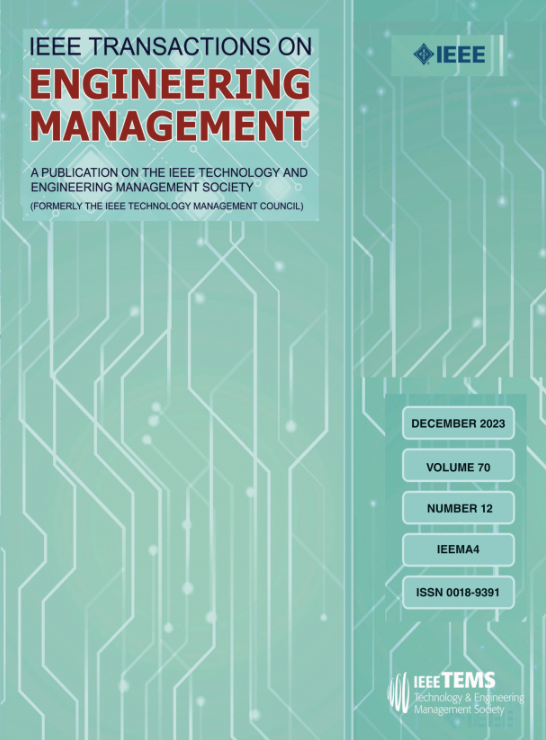人工智能应用强度与企业创新绩效的关系:人工智能能力的作用
IF 4.6
3区 管理学
Q1 BUSINESS
引用次数: 0
摘要
尽管人工智能(AI)在推动创新方面的变革潜力得到了广泛认可,但人工智能采用强度与企业创新绩效之间的关系仍未得到充分探讨。为了解决这一差距,本研究通过技术供给理论(TAT)的视角考察了人工智能采用强度对企业创新绩效的影响,强调了人工智能供给的作用。此外,它还研究了数据质量在塑造人工智能采用强度和人工智能能力之间关系中的调节作用。本文利用396家中国企业的数据,建立了一个概念模型,并通过结构方程模型进行了检验。研究结果表明,人工智能采用强度显著提高了企业创新绩效。人工智能支持——从三个维度概念化:移动性支持、交互性支持和自主性支持——介导了人工智能采用强度对企业创新绩效的影响。这些能力共同支持人工智能作为支持工具和创新代理人的双重角色。此外,数据质量正调节人工智能采用强度与人工智能能力之间的关系,强调了数据质量在实现人工智能潜在利益方面的重要性。本文促进了我们对利用人工智能来支持创新成果的理解,并在人工智能创新的背景下扩展了TAT的理论基础。这些见解为寻求通过采用人工智能来提高创新成果的公司提供了有价值的指导。本文章由计算机程序翻译,如有差异,请以英文原文为准。
The Relationship Between AI-Adoption Intensity and Firm Innovation Performance: The Role of AI Affordances
Although the transformative potential of artificial intelligence (AI) in driving innovation is widely acknowledged, the relationship between AI-adoption intensity and firm innovation performance remains underexplored. To address this gap, this study investigates the impact of AI-adoption intensity on firm innovation performance through the lens of technology affordance theory (TAT), emphasizing the role of AI affordances. Additionally, it examines the moderating role of data quality in shaping the relationship between AI-adoption intensity and AI affordances. A conceptual model was developed and tested through structural equation modeling using data collected from 396 Chinese firms. The findings demonstrate that AI-adoption intensity significantly enhances firm innovation performance. AI affordances—conceptualized along three dimensions: mobility affordance, interactivity affordance, and autonomy affordance—mediate the effect of AI-adoption intensity on firm innovation performance. These affordances collectively support AI’s dual roles as a supportive tool and an innovation agent. Furthermore, data quality positively moderates the relationship between AI-adoption intensity and AI affordances, underscoring the importance of data quality in realizing AI’s potential benefits. This article advances our understanding of leveraging AI to bolster innovation outcomes and extends the theoretical foundations of the TAT within the context of AI innovation. These insights provide valuable guidance for firms seeking to enhance their innovation outcomes through AI adoption.
求助全文
通过发布文献求助,成功后即可免费获取论文全文。
去求助
来源期刊

IEEE Transactions on Engineering Management
管理科学-工程:工业
CiteScore
10.30
自引率
19.00%
发文量
604
审稿时长
5.3 months
期刊介绍:
Management of technical functions such as research, development, and engineering in industry, government, university, and other settings. Emphasis is on studies carried on within an organization to help in decision making or policy formation for RD&E.
 求助内容:
求助内容: 应助结果提醒方式:
应助结果提醒方式:


